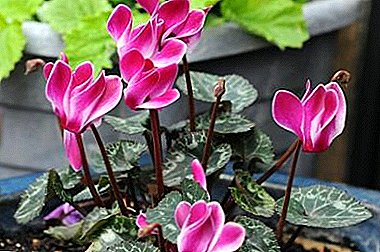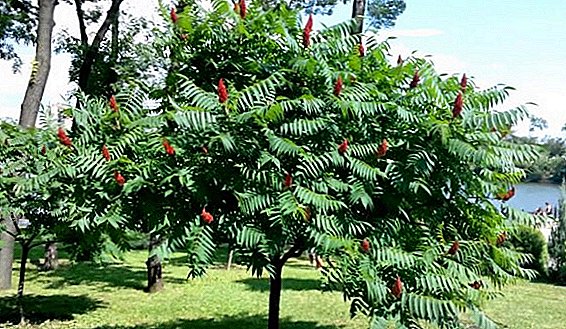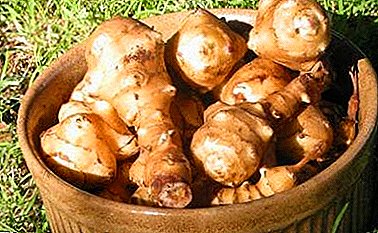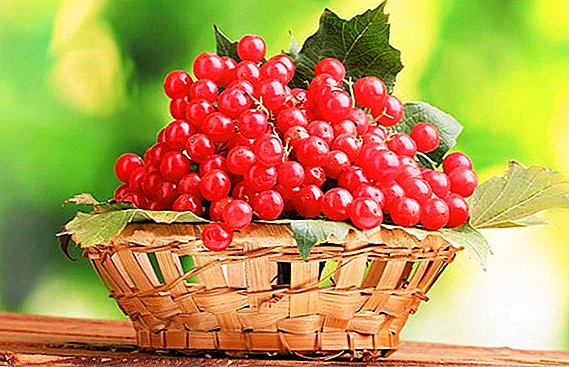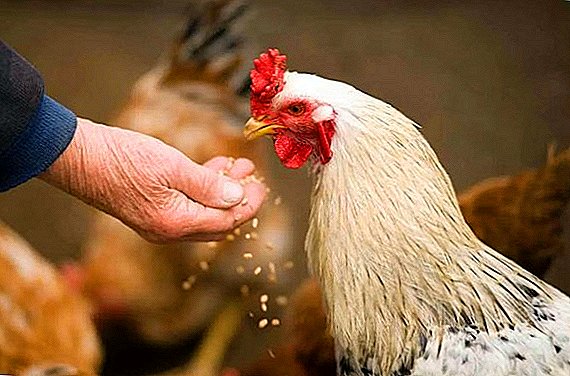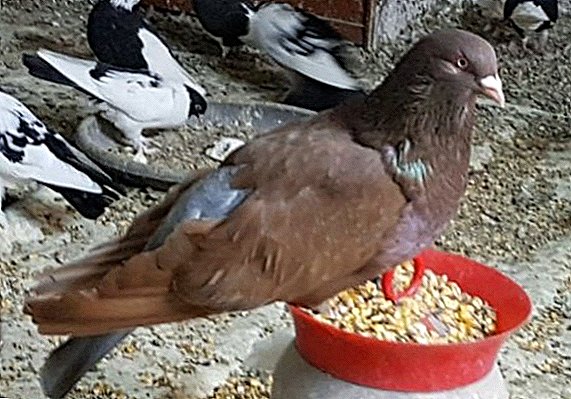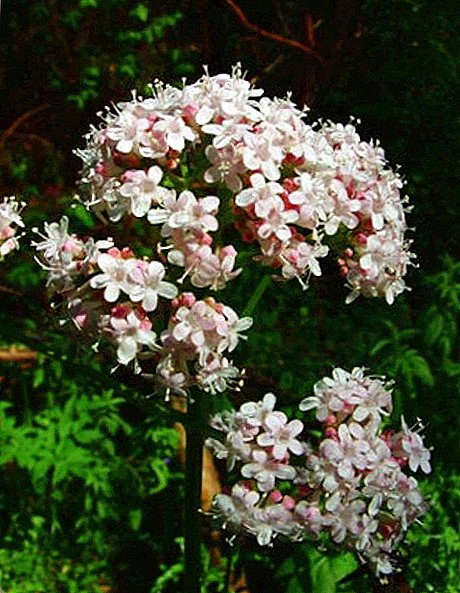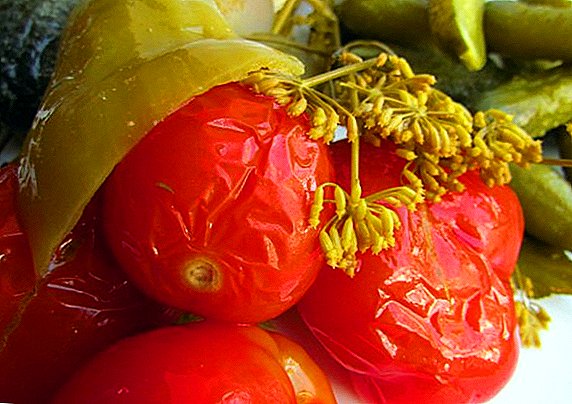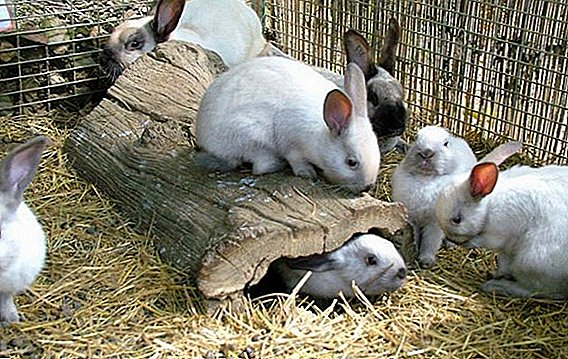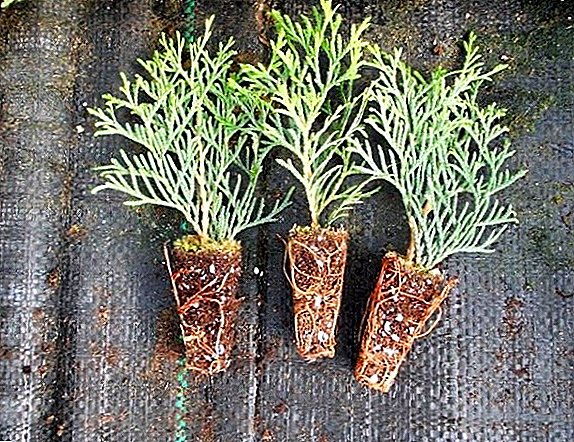 Thuja is home to East Asia. In our latitudes, thuja has gained popularity due to its ruggedness and dense dense crown. Thuja is easy to cut, so it is possible to give it any shape. Thanks to this feature, thuja is used in many landscape compositions.
Thuja is home to East Asia. In our latitudes, thuja has gained popularity due to its ruggedness and dense dense crown. Thuja is easy to cut, so it is possible to give it any shape. Thanks to this feature, thuja is used in many landscape compositions.
Thuja serves as material for hedges, it is planted with whole alleys. For such plantations dozens and hundreds of young trees are required, therefore the issue of rapid reproduction of the plant is relevant.
The most popular method that is suitable for thuja is reproduction by cuttings in the spring. Despite the fact that With this method of breeding trees are less hardy than seedlings, it is much more popular. This is explained by the following:
- reproduction by cuttings allows you to save the features of the parent plant;
- the seeds of conifers need natural stratification, which takes a lot of time. The process of growing seedlings from seed ready for planting lasts about 6 years;
- reproduction of thuja cuttings in the spring allows you to get ready seedlings for planting in a permanent place in 2-3 years.
 The vegetative method of breeding tui also has disadvantages. In the process of growing seedlings, only 70-80% of the plants from the total number of harvested cuttings survive. If you do not follow the rules of breeding conifers, this percentage will be even less.
The vegetative method of breeding tui also has disadvantages. In the process of growing seedlings, only 70-80% of the plants from the total number of harvested cuttings survive. If you do not follow the rules of breeding conifers, this percentage will be even less.How to prepare spring cuttings
In order for the cultivation of thuja from cuttings in the spring to be fruitful, it is necessary to properly prepare the cuttings.
For harvesting spring cuttings need to take the tops of the axial shoots of thuja. These branches retain the nature of branching, which is inherent in this species. If you take the stalk from the side branch, you get the creeping form of the plant.
 The best period to separate cuttings from the mother plant is the spring month of April. At this time, the first phase of plant growth occurs. The plant from which the escape is taken must be 2-3 years old.
The best period to separate cuttings from the mother plant is the spring month of April. At this time, the first phase of plant growth occurs. The plant from which the escape is taken must be 2-3 years old.
In order for a thuja to have a better chance of settling down, whereas this plant can not be grown from a cutting plant with a 100% probability with this method of propagation, it is necessary to properly separate the cutting. To do this, it is necessary to tear it off manually, without using a secateur. Tear off need a sharp movement. The detachable part should be 20 cm long. When a branch is pulled out at its end, a piece of last year's wood remains, which contains nutrients.
Important! For rooting thuja, you can collect planting material in the summer, for example, in June. But such blanks will grow longer for the season until they are fully prepared for disembarkation, since, in essence, they will “oversleep” the harvesting season. In June, the Tui experienced a second period of growth.
Primary preparation of harvested thuja cuttings - cleaning from the bottom of the cutting of small twigs and needles. This is done so that they do not come into contact with sand or wet soil, because in this case they will begin to rot.
Features rooting cuttings in the spring
 After harvesting, it is necessary to root the thuja cuttings in the spring. Before that, you need to decontaminate young shoots. To this end, they are immersed in a weak solution of manganese for a few minutes, after which for one day they are placed in the drug "Kornevin" or another growth stimulator.
After harvesting, it is necessary to root the thuja cuttings in the spring. Before that, you need to decontaminate young shoots. To this end, they are immersed in a weak solution of manganese for a few minutes, after which for one day they are placed in the drug "Kornevin" or another growth stimulator.
Existing rooting methods, which one is suitable for spring
The next thing in the process of how to root the thug from the branch is to place the cutting on Wednesday, where it can take root. There are several ways of rooting a thuja:
- in the substrate;
- in water;
- in a diaper with moss.
 For cuttings prepared in spring, rooting in the substrate is considered the best method. Sprigs need a lot of moisture and at least a minimum of nutrients. In the water and in the diaper with moss there are not enough nutrients for thuja growth.
For cuttings prepared in spring, rooting in the substrate is considered the best method. Sprigs need a lot of moisture and at least a minimum of nutrients. In the water and in the diaper with moss there are not enough nutrients for thuja growth.How to prepare the substrate for cuttings
In the question of how to plant a thuja branch, not the last role is played by the substrate in which the cutting will be placed. As a substrate, you need to use pure river sand or a mixture of sand and garden soil, which must be disinfected.
For disinfection of river sand, it is placed in a galvanized bucket or tank and boiled it, placing it in a large container with water. After that, the sand is poured over with a 3% solution of potassium permanganate. After completing these procedures, sand can be used in the substrate for planting thuja cuttings.
Some carry out sand disinfection, having already placed it in a tank for disembarkation. Sand is poured over with boiling water, and after that with a solution of potassium permanganate.
How to plant a spring stalk
After the preparation of the desired substrate, another task remains to be done - how to root the thuja cuttings in spring. The procedure is as follows:
- prepare seed tanks with a large number of drainage holes;
- lay a drainage layer at the bottom of the tank - crushed expanded clay or gravel;
- a substrate is laid on the drainage layer - river sand or a mixture of river sand with garden soil;
- prepared cuttings deepen into the substrate to a depth of 1-1.5 cm and compact the soil around them.
Did you know? When new shoots start to appear on a cutting planted in a substrate, it means that it is well rooted.
Proper care of cuttings - the key to success
 The next thing you need to know when investigating the question of how to grow a thuja from a cutting is the rules for leaving after planting. Since the planting takes place in early spring, the outdoor temperature is too low for young branches. Therefore, planted cuttings are placed in a greenhouse, in a shaded place or in a greenhouse of spunbond.
The next thing you need to know when investigating the question of how to grow a thuja from a cutting is the rules for leaving after planting. Since the planting takes place in early spring, the outdoor temperature is too low for young branches. Therefore, planted cuttings are placed in a greenhouse, in a shaded place or in a greenhouse of spunbond.
The temperature for growing tui from cuttings should be between 17 and 23 degrees. Spray seedlings should be sprayed daily, and if the weather is hot, then the substrate needs to be moistened twice a day.
Important! Water should not get onto the thuja leaves during spraying, as this can cause them to rot.Two months after disembarking and proper care, the cuttings should release the first roots. When this happens, the risk of drying the cuttings is significantly reduced.
What to do when cuttings take root
After the cuttings planted in spring take root, they must be transplanted to grow into a special bed - shkolka. In shlyokuy tui seedlings spend 2-3 years, until they are ready to transplant to a permanent place. Sprigs planted in the spring in spring are placed in a school in the same year, in September.
How to transplant thuya shanks in shkolku:
 choose a site for the formation of shkolki - required partial shade;
choose a site for the formation of shkolki - required partial shade;- dig up the soil on the plot, add peat to it at the rate of about one bucket per square meter;
- rooted cuttings need to be watered so that they can be easily removed from the substrate without damaging their roots;
- plant cuttings at a distance of 25 cm from each other in shkolku;
- moisten the soil.
Did you know? If you need to quickly get plants of thuja for planting on the territory and there is no time to grow them, you can buy ready-made seedlings. They need to be carefully chosen so that the plant is strong and healthy, accustomed to local climatic conditions. In healthy specimens, the needles look bright, sit firmly on the ground and do not crumble. The stem should be without signs of disease, without spots.Now you know how to grow thuja from a sprig in spring. The case is quite troublesome, care for cuttings requires daily attention. But when they take root, care becomes easier, and after a few years you can plant a thuja in the form of a green hedge or as an accent on the garden. This ornamental plant perfectly completes the image of the landscape.


 choose a site for the formation of shkolki - required partial shade;
choose a site for the formation of shkolki - required partial shade;